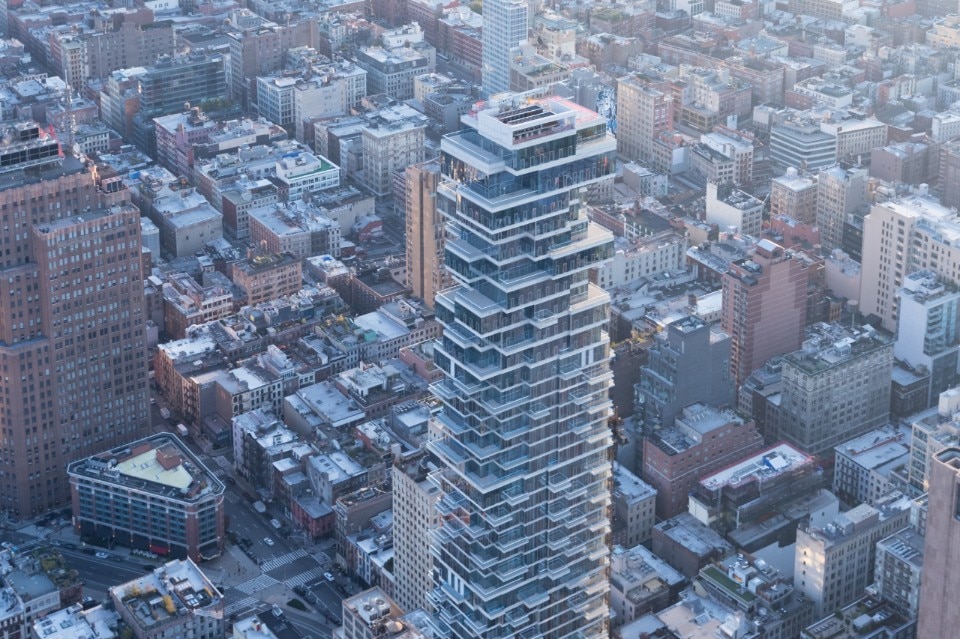This article was originally published on Domus 1068, May 2022.
Strange as it now seems, just a decade and a half ago the New York skyline was almost exclusively a thing of office towers. In Lower Manhattan, Chase Bank, Woolworth, 70 Pine; in Midtown, Empire State, Chrysler, 30 Rock; in Brooklyn, practically nothing: until the city’s recovery from the global financial crisis, its most recognisable vertical landmarks were not places in which people could live.
Apartment houses, in the main, were as earthbound as they had been 70 and more years earlier, when Le Corbusier first arrived in Manhattan only to dismiss the buildings he saw there as “too small”. No longer.
Beginning in 2011 with Rafael Viñoly’s 432 Park Avenue, a series of ever loftier and more extravagant residential properties have spiked the cityscape. And while other taller ones have come along (Christian de Portzamparc’s One57 in 2014; Jean Nouvel’s 53W53 in 2019; SHoP’s 111 West 57th in 2021), there is one that set the pace for the architectural ambition of the whole pack – and that still grabs attention like little else, the most extraordinary needle in that “pin-cushion in profile”, as Henry James once described Manhattan’s silhouette.
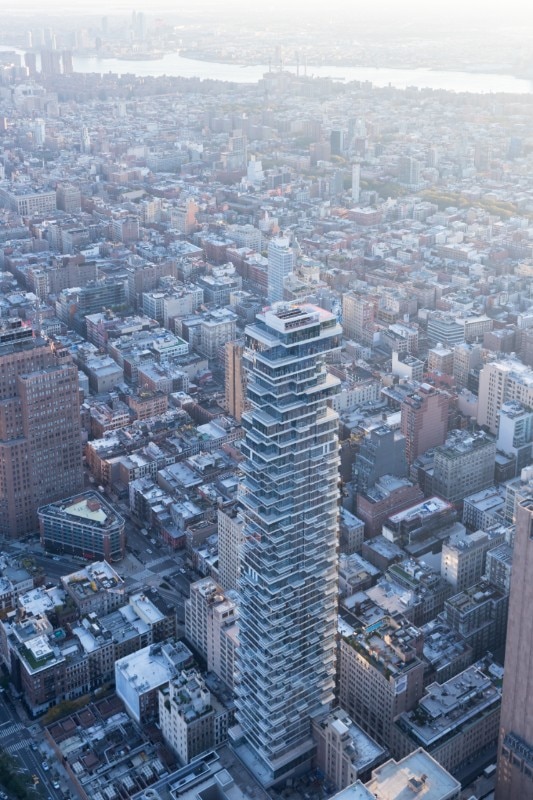
Starting life in the older, pre-condo tower New York, 56 Leonard Street lay gestating in the ground as the skyline began its remarkable transformation. In 2007, Philip Schmerbeck was newly arrived in Manhattan, a 32-year-old journeyman architect taking up a position at Herzog & de Meuron’s US office. “It was my first project with the firm,” recalls Schmerbeck, now the H&deM stateside director. “I worked on it for the next ten years.” Indeed, 56 Leonard’s exceptionally long timeline from conception to occupancy is even longer than that: just this spring, after a seemingly endless wait, a mirror-finished steel globule by sculptor Anish Kapoor is being added to the building’s north-east corner, realising the designers’ original vision 15 years after they got the gig.
When the office began, they didn’t have much to go on. At the time, New York’s only major apartment high-rise from a marquee name designer was Frank Gehry’s 8 Spruce Street in the Financial District; Herzog & de Meuron had themselves completed a major condo project in NoHo, at 40 Bond Street, just the year prior, but that one (notwithstanding its strong graphics and shimmering materiality) had been relatively modest in size and logistical complexity.
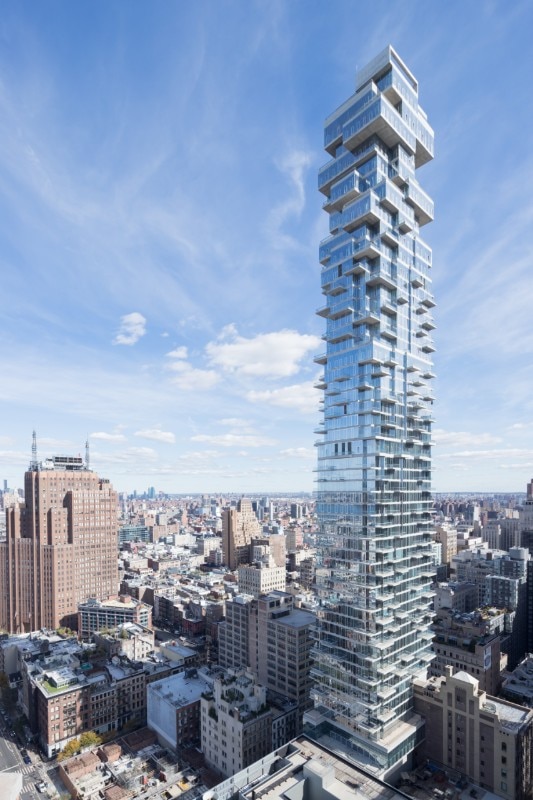
Their new project would be nothing like the last: its developers, Alexico Group, had acquired the parcel at the corner of Church Street not only for its prime location in the burgeoning Tribeca neighbourhood but for its favourable legal status, an anomaly of the zoning code that would entitle the owners to build to an exceptional height. The architects would have to go very, very big, creating a residential landmark unlike any the city had known. With size and typology their only givens, the firm proceeded to make those two conditions the focus of their partie. “We knew we wanted to express the individual units in a way that would be immediately legible,” Schmerbeck recalls.
Where the traditional office skyscraper puts a premium on uniformity, masking its standard floors behind a single, undifferentiated envelope, Schmerbeck and his colleagues were determined that a residential skyscraper should do just the opposite, giving distinct expression to each individual dwelling.
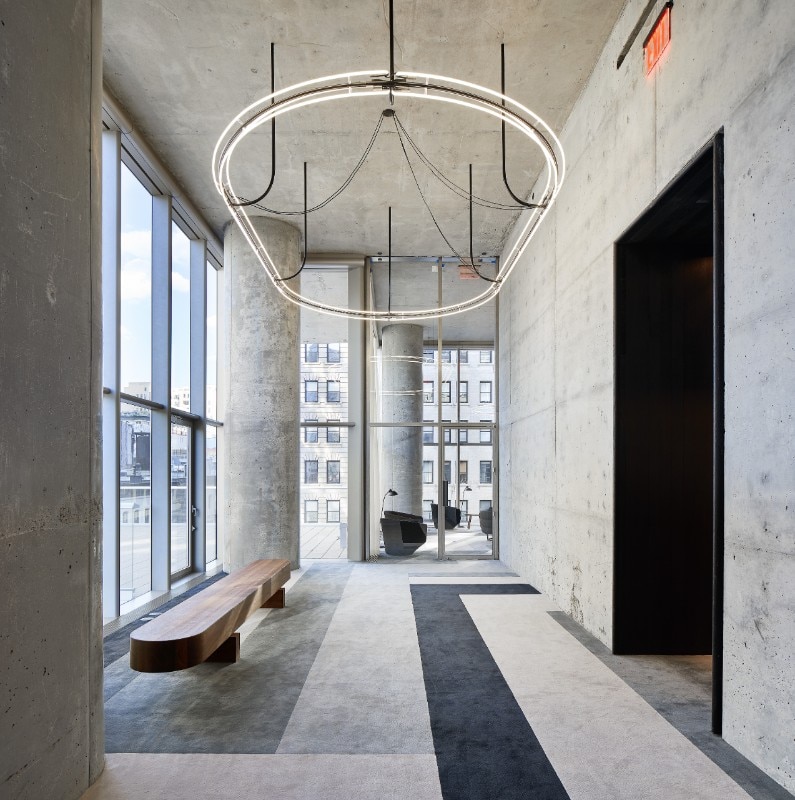
Here the team was not entirely without some frame of reference: the idea of “houses in the sky” has long been in the professional bloodstream – SITE’s satirical tract-homes-on-a-shelf Highrise of Homes proposal from 1981 being one memorable example – while the stacking of repeated, house-like forms has been a recurring motif in H&deM’s own oeuvre – at VitraHaus, for example, where the design firm’s exhibition space in Weil am Rhein features a series of gabled volumes, piled one atop the other with seeming abandon. At Leonard Street, the designers would take a similar conceit one step further.
The jagged, erector-set outline – familiar now to millions of New Yorkers, who regularly refer to it as the “Jenga Tower” – is if anything even more complex than it appears. From a ground-level base housing the lavish black-clad lobby and a commercial space (as yet unleased), the building rises as far as the seventh floor in a sequence of irregular cantilevers, projecting daringly over the street to both the north and east. In what may surprise the casual observer, it then ascends in a more or less conventional standard-floor pattern up to the 50th story, with setbacks and balconies making the shaft appear to be part of the stack; it then returns to cantilevering in its uppermost reaches, completing the illusion.
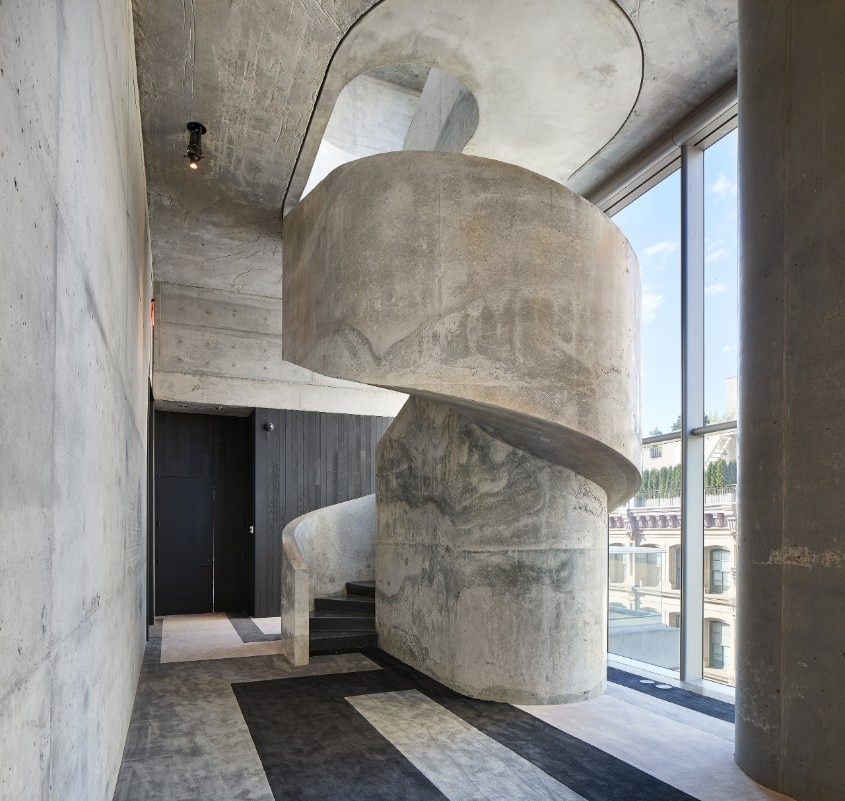
With a mechanical suite at the bottom and in the middle, and a concrete service core at the centre, 56 Leonard is in fact a perfectly normal New York City apartment building, brilliantly disguised as a precarious heap of modular boxes dropped into place willy-nilly. Its apparent modularity seems especially significant, poignant even, right at the moment.
Even as the Kapoor piece is being hammered and welded into place beneath the lowermost overhang (“Just an incredibly difficult process,” as Schmerbeck notes), the Manhattan tower is set to lose a sort of spiritual cousin half a world away: the Nakagin Capsule Tower in Tokyo, another “houses in the sky” scheme from the early 1970s, is currently being demolished, its plug-in Metabolist dream finally succumbing to the harsh realities of the building’s programmatic and structural shortcomings.
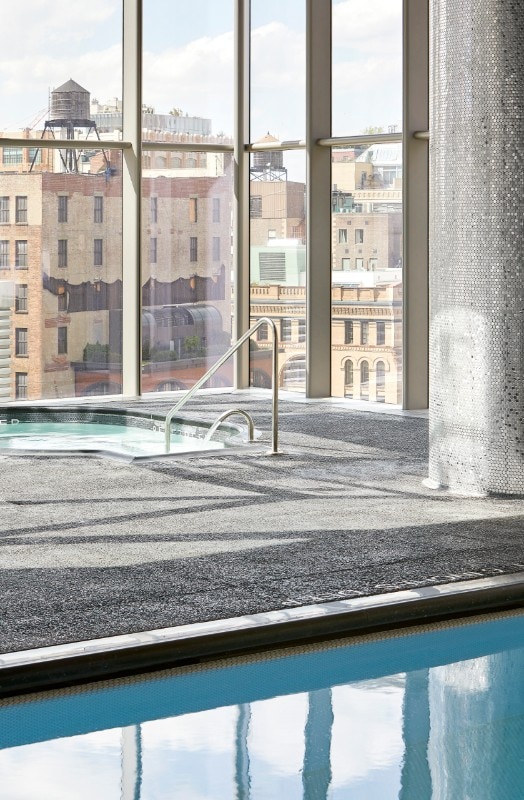
Five years into its own experiment in vertical living – and notwithstanding the occasional leak and a few missing tiles on the tenth-floor pool deck – 56 Leonard seems like a comparatively successful combination of far-out urban fantasy and pragmatic machine a habitér, one with the potential to pick up where Nagakin left off and fulfil at least some share of its promise. If it does so, it will be because Herzog & de Meuron’s remarkable skyline statement also happens to be a remarkably comfortable apartment house.
Unknown except to its well-heeled occupants, life inside the leaning tower is one of orderly splendour, surrounded by the soft finishes of the exposed concrete walls in the shared lounges, all sparely furnished with pieces chosen by the architects. The film screening room is hushed and intimate, the children’s play zone outfitted with built-in wooden cabinets. From the sprawling, single-unit floors near the tower’s top, jutting out over their neighbours below, inhabitants can take in the scene and sense themselves, perhaps with a certain frisson, as early enlistees in a bold endeavour: not just the owners of homes in the air, but the founders of a new city, the settlers of a colony in the clouds.
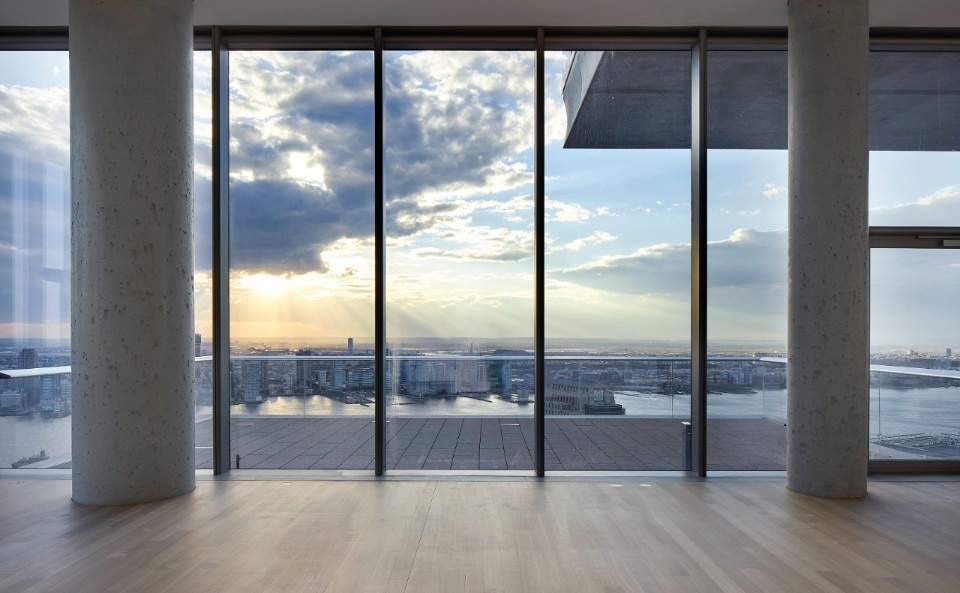
- Project:
- 56 Leonard Street
- Architects:
- Herzog & de Meuron
- Project architects:
- Jacques Herzog, Pierre de Meuron, Ascan Mergenthaler
- Project management:
- Philip Schmerbeck, Mehmet Noyan, Vladimir Pajkic
- Design team:
- Caroline Alsup, Mark Chan, Simon Filler, Dara Huang, Sara Jacinto, Jin Tack Lim, Mark Loughnan, Jaroslav Mach, Donald Mak, Hugo Miguel Moura, Jeremy Purcell, Chantal Reichenbach, James Richards, Heeri Song, Charles Stone, Kai Strehlke, Zachary Martin Vourlas, Jason Whiteley, Sung Goo Yang, Daniela Zimmer, Christian Zöllner, Iwona Boguslawska, Martin Raub, Josh Helin, Joem Elias Sanez, Marija Brdarski
- Public artwork:
- Anish Kapoor
- Executive architect:
- Goldstein, Hill & West Architects
- Structural engineering:
- WSP Cantor Seinuk
- Mechanical engineering:
- Cosentini Associates
- Site supervision:
- Lend Lease
- Client:
- Alexico Group
- Location:
- New York City, USA
- Site area:
- 1,162 m²
- Total built area:
- 45,291 m²
- Design phase:
- 2006-2012
- Construction phase:
- 2007-2017


